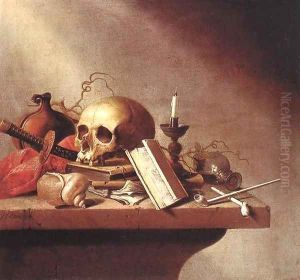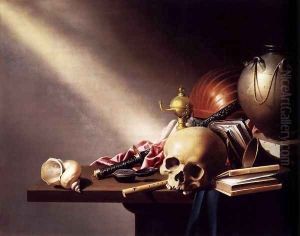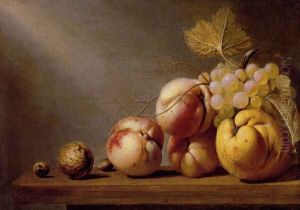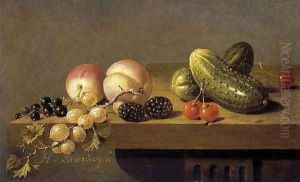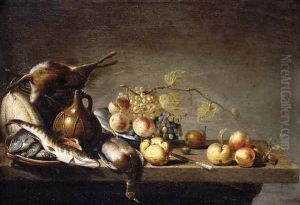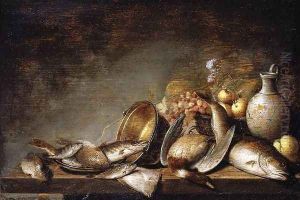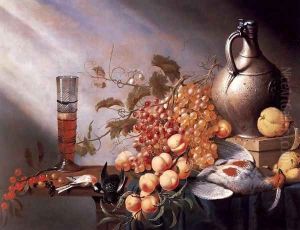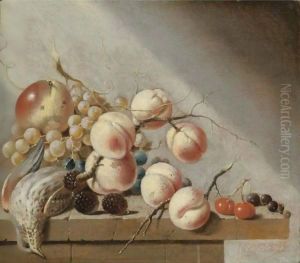Harmen Steenwijck Paintings
Harmen Steenwijck was a Dutch Golden Age painter, renowned for his still life works, particularly those that belong to the vanitas genre, which are symbolic representations of the transience of life, the futility of pleasure, and the certainty of death, encouraging a somber worldview. Born in 1612 in Delft, Netherlands, Steenwijck was part of a prominent family of artists that significantly contributed to the Dutch Golden Age of painting, a period characterized by its wealth of artistic talent and innovation. His uncle, Pieter Steenwijck, was also a notable still life painter, suggesting that artistry ran deep within his family lineage.
Steenwijck's contributions to art are particularly notable for their meticulous attention to detail, sophisticated use of light and shadow, and the incorporation of symbolic elements that invite the viewer to reflect on moral and philosophical issues. His works often featured typical vanitas symbols such as skulls, extinguished candles, and books, symbolizing mortality, the fleeting nature of knowledge, and the vanity of worldly pursuits. One of his most famous works, 'Still Life: An Allegory of the Vanities of Human Life', is a quintessential example of this genre, showcasing his skill in rendering materials and surfaces with great realism and his profound understanding of the vanitas theme.
Despite the high regard for his work, details about Steenwijck's life are relatively scarce, and much of what is known comes from his surviving artworks and the records of the Guild of Saint Luke in Delft, where he was an active member. His career was primarily based in Leiden and later in Delft, cities that were vibrant centers for the arts in the 17th century Netherlands. Steenwijck's artistic output, although not voluminous, played a significant role in the development of still life painting in Europe, influencing subsequent generations of artists.
The exact year of Harmen Steenwijck's death is uncertain, but it is believed to have been around 1656. Despite the passage of time, Steenwijck's work continues to be celebrated for its beauty, technical skill, and deep philosophical underpinnings. His paintings are held in high esteem and can be found in major museums and collections around the world, serving as enduring reminders of the Dutch Golden Age's rich artistic legacy.
